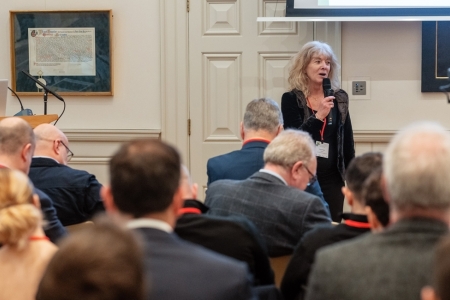Going greener is a significant challenge for the furniture industry – but it also presents opportunities, explains John Hubbard, technical consultant at FIRA International, the service provider to the Furniture Industry Research Association which has published a new guide on the topic …
In recent years there has been an increasing interest and focus on sustainability across all parts of the consumer products supply chain, and the furniture industry is not an exception.
Fortunately, the furniture industry has a positive story to tell compared to other sectors. Most furniture products have a long service life, and there is a potential for extending their life into a second one. Moreover, the industry has a relatively short supply chain, with significant manufacturing capacity still remaining in the UK.
However, the industry should not become complacent. Many significant challenges exist, and it is up to everyone in the industry to promote the sustainability credentials of different sectors and drive sustainability improvements through supply chain partnerships.
What can often be confusing about the discussions around sustainability is the significance that different people put on different sustainability aspects, and the lack of coherent measurement metrics. However, most organisations possess data on sustainability factors because they are closely related to cost. In many cases, such as energy consumption, the goal of improving the sustainability of a product can lead to a corresponding cost benefit.
No two organisations will have identical challenges, due to differences in location, product range and distribution model, but the lack of comparability should not be a barrier to making improvements in the supply chain. To identify areas for improvement, organisations must evaluate the potential risks they face and the impact that these risks may have on the business and the wider community. In environmental management systems these are referred to as aspects and impacts, and only by understanding the scale of these risks can meaningful decisions about improvements be made.
By taking action at each step of the supply chain, it is hoped that over time the whole industry will be in a better position. In the standard ISO 14001, certified companies are expected to commit to continuous improvement by making incremental changes. Therefore, sustainability actions should not be seen as a one-time decision, but as a journey where small steps can make a difference.
Monitoring is also important, especially when making significant claims about your company’s ethical and sustainable position. Any claims that are made need to be backed up by evidence and be meaningful with regard to the product. Historically companies have been criticised for making vague or non-specific claims about their sustainability practices, often referred to as ‘greenwashing’.
One scheme, created specifically for the furniture industry to provide a benchmark for sustainable practices, is the Furniture Industry Sustainability Programme (FISP). This audit-based scheme identifies best practice to drive continual improvement of its members’ social and environmental impacts, and can lead to independent certification recognised within the industry. The scheme is supported by the BFM, CIUK, FIRA and the NBF.
To bring together the varied aspects of modern sustainability thinking, the Furniture Industry Research Association recently published a guide, entitled Sustainability Challenges and Opportunities for The Furniture Industry. The guide introduces sustainability concepts across the supply chain and includes sections on materials, carbon emissions, logistics, the circular economy, waste management, packaging, and options for responsibly presenting sustainability and environmental claims.
More about the guide is available here.













